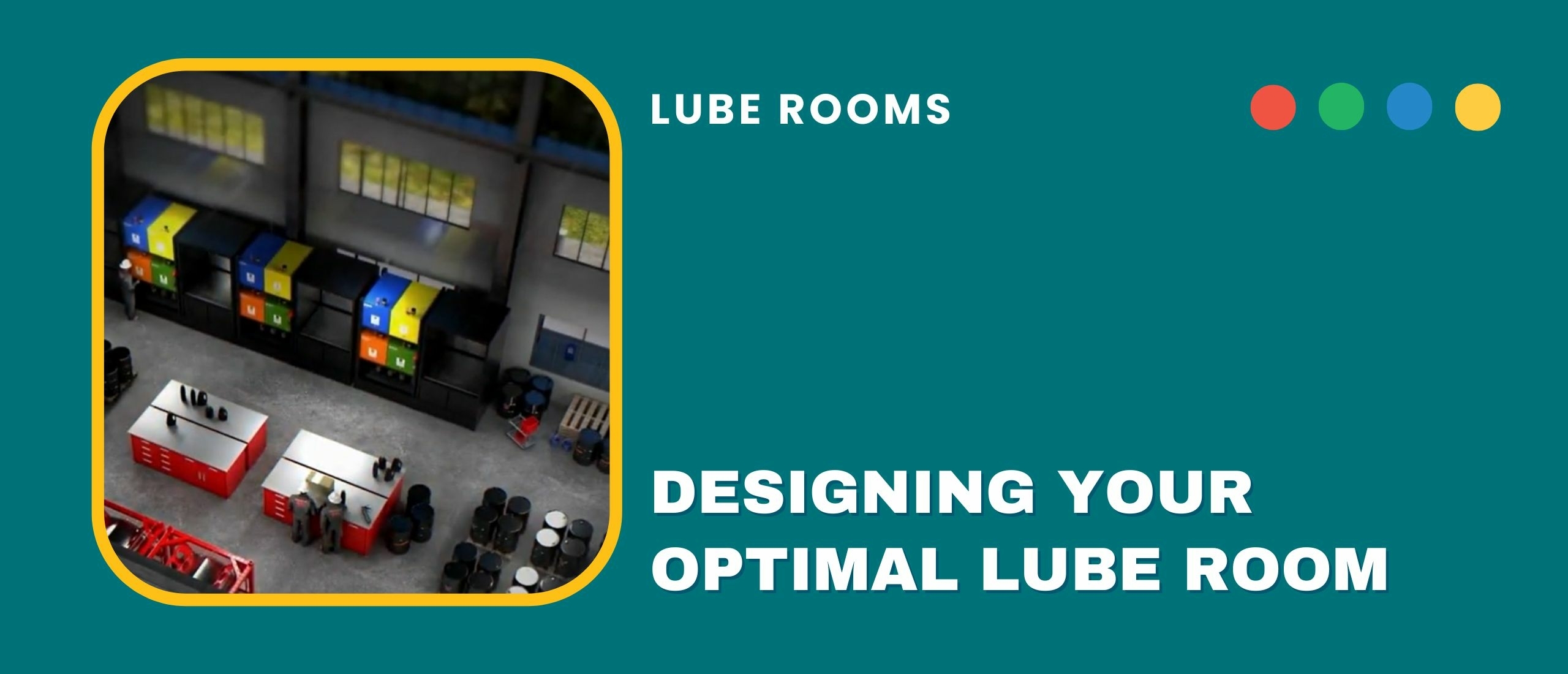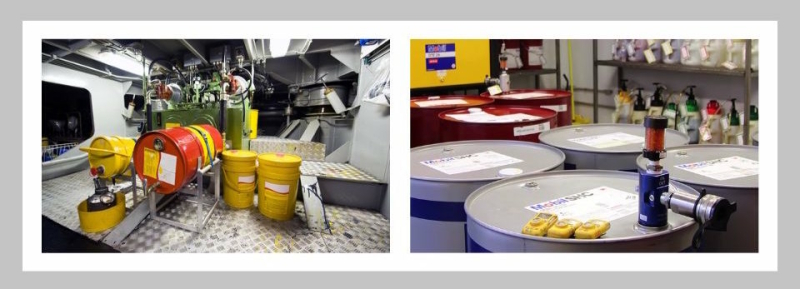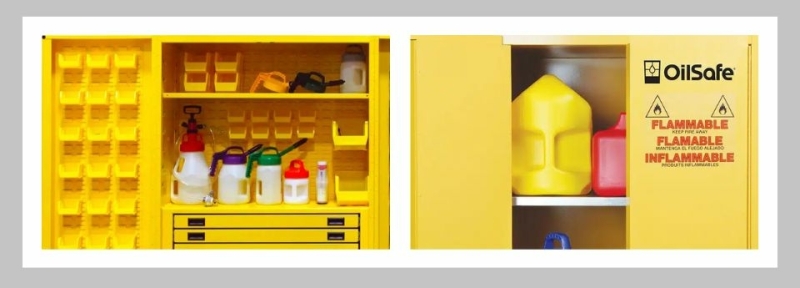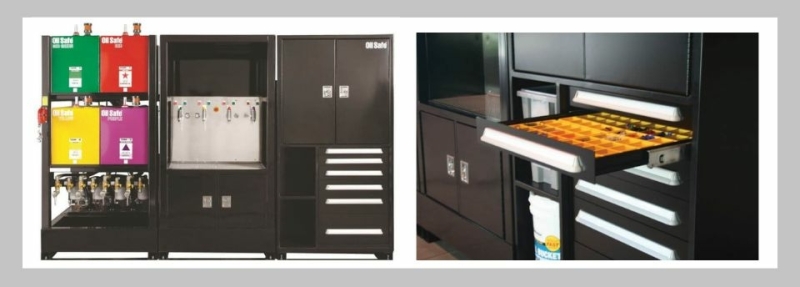
Lube rooms
Mastering Lubrication Reliability: Designing your optimal lube room
11/03/2025
Achieving true machine reliability depends heavily on robust contamination control, starting in the Lube Room. Follow key criteria - cleanliness, dedicated equipment, rigorous PLIS labelling, and physical retention features - to protect lubricants from "end-to-end process".
Why your Lube Room is the cornerstone of Reliability
In the world of industrial maintenance, achieving peak plant and machine reliability hinges entirely on robust Lubrication Reliability™ (LR). While lubrication often seems straightforward, failure to manage it properly invites catastrophic risk. Studies highlight the severity of contamination, reporting that 80% of hydraulic failures and up to 90% of bearing failures are directly attributable to contamination issues.
Contamination control is a "start-to-finish process", and the starting point for superior standards is the design and implementation of a high-functioning Lube Room. This dedicated space optimises the storage, dispensing, and protection of lubricants, guiding your operation toward the principles of the 6 Rights in Lubrication.
If you are looking to enhance equipment performance and extend machine life, designing a Lube Room that complies with LR standards is essential.
Strategic pre-design preparation
Before construction or renovation begins, detailed planning is crucial for creating a LR-compliant space.
Essential planning steps:
• Streamline Lubricant Selection: Streamlining lubricant types and brands reduces complexity and minimises the potential for cross-contamination or misapplication. (Note: It is wise to rationalise your lubricant inventory to simplify purchasing and storage, though this specific insight is outside the provided sources.)
• Establish PLIS: Implement a Plant Lubrication Identification Standard (PLIS). This uniform labelling system is vital for ensuring the correct lubricant is used every time, from bulk storage to the dispensing tool.
• Test and Verify Cleanliness: New lubricant supplies must be tested for ISO 4406 cleanliness standards before they enter your facility. (Note: ISO 4406 is an internationally recognised code used to quantify particulate contamination levels in fluids. Ensuring new oil meets standards prevents you from introducing contamination immediately, an insight outside the provided sources.)
• Ensure Compliance: Confirm that all designs and practices adhere to local Safety and Environmental regulations.
Location assessment
When assessing location, consider these criteria:
1. Existing Room vs. New Construction: Which option provides the best long-term potential for climate control and segregation?
2. Indoor vs. Outdoor: Indoor storage is generally preferred to maintain stable, climate-controlled conditions. Mobile Container Solutions stored outside must be properly isolated (steel wall plus PU foam) and equipped with air conditioning or heating to protect from freezing temperatures and extreme sun exposure.
3. Centralised vs. Decentralised Storage: Will one central Lube Room serve the whole plant, or are smaller, decentralised satellite stations necessary?
4. Packaging Preferences: Assess whether existing drums/containers will be used or if new tanks/reservoirs are required for bulk storage.
Creating the pristine storage environment
The storage area itself must adhere to the "Trinity" of contamination control: it must be clean, cool, and dry. This environment minimises the breathing of lubricants, preventing airborne contaminants from finding their way inside.
Best Practices for new and bulk Lubricants:
• Segregation: The area for new lubricant supply must be segregated from dispensing areas.
• Climate Control: The area should be climate controlled to maintain a stable temperature.
• FIFO Strategy: Implement a First In, First Out (FIFO) strategy using PLIS labelling to track inventory. Regularly remove expired lubricants based on their storage conditions.
• Drum Storage: If storing oil drums, position them horizontally with the bung at the three and nine o'clock position. This maintains a hydraulic lock, preventing the drum from breathing. If stored vertically, adding a Desiccant Breather is highly recommended to keep the lubricant clean.
 Drums stored in horizontal and vertical positions
Drums stored in horizontal and vertical positions
• Closed Systems: All storage tanks or drums must be sealed off from the air. The suction tube and hose combination needs to be fixed and sealed on the drum or tank.
• Dedicated Bulk Storage: Utilising systems like the OilSafe bulk storage system is highly effective, as they allow for storage, easy dispensing, and filtering of the lubricant, minimising contamination.
Dedicated equipment and safe dispensing
The transfer of oil from the Lube Room to the machine, often where cross-contamination occurs, must be managed rigorously. The general rule is to use dedicated equipment per lubricant.
Lubricants in use and dispensing tools:
1. Packaging size: Opt for the smallest packaging size based on consumption to reduce waste and exposure.
2. Closed circuit systems: Employ closed circuit storage systems.
3. Filtration: Install filtration systems specifically for new oil transfer and circulation.
4. Dispensing can criteria: Use professional dispensing tools like OilSafe cans. These should be selected in accordance with the application and lubricant type.
◦ Dispensers must be colour coded and PLIS identified.
◦ They should be translucent to allow content and level checks.
◦ Crucially, they must be closable to the environment and 100% sealable.
◦ Dispensers should be kept closed (spout twisted) when not in use.
5. Cleanliness and Storage: Dispensing tools must be kept clean inside and outside at all times and should be stored in closed cabinets or racks with retention shelves.

Grease handling
For bulk grease, dedicated GreaseStations should be used. These systems are equipped with a heavy-duty pneumatic grease pump, a cover, and a follower plate that protects the grease inside the drum. These stations prevent contamination when filling manual grease pumps or when dispensing grease on site.
Critical physical features
The Lube Room’s physical structure must support cleanliness and safety.
• Cleanliness & Lighting: Select a clean room environment with light-coloured walls (white or grey) and sufficient LED lighting.
• Retention capacity: All lubricant storage (tanks, drums, reservoirs) must be placed on proper retention equipment. A rule-of-thumb is to use 110% retention capacity, although this should always be verified against local regulations. Acceptable retention options include steel or plastic bunds, but care must be taken to avoid cheap, lightweight plastic.
• Flooring: The ideal floor design uses a combination of materials: a galvanised steel grid is preferred for general walking areas, combined with a steel checkered plate to accommodate drums or tanks.
• Ventilation: All storage designs require proper ventilation, achieved either through minimal natural airflow or powered electrical fans.
• Ancillary equipment: Ensure you have closed cabinets with retention shelves for small lubrication equipment (e.g., grease pumps and cartridges) and open racks for OilSafe cans. Include essential safety gear such as MSDS folders, absorbents (pads, rolls), and wipe material.

The final barrier: machine protection
Contamination control doesn't end in the Lube Room; it must extend to the equipment itself. Every time a machine is opened, there is a risk of contamination.
To keep machines "tied in" and minimise exposure, adopt these strategies:
• Eliminate traditional dipsticks.
• Utilise proper sight glasses.
• Employ appropriate Quick Connect fittings.
 OilSafe colour-coded quick-connects
OilSafe colour-coded quick-connects
The Power of desiccant breathers
A great starting point for machine protection is addressing where the machine breathes. Since facility air is often neither clean nor dry, employing a desiccant breather is critical.
Desiccant breathers, such as those that use multi-part construction, work in two stages:
1. Particulate Filtration: Air first passes through a synthetic fibre or particulate filter to remove solids.
2. Dehumidification: The air then passes through the desiccant material (similar to what is found in beef jerky bags) to dehumidify the air before it enters the machine.
A key benefit of desiccant breathers is their colour change indicator. This change serves as an extremely useful inspection point. By noting the direction of the colour change (top-down or bottom-up), you can determine if the breather is merely dehumidifying incoming air (expected) or if it is dehumidifying the machine’s own headspace, which could indicate internal water contamination.

Conclusion and next steps
By meticulously adhering to these guidelines, from pre-design preparation and the implementation of PLIS, to physical retention features and advanced machine protection, you create a Lube Room that acts as the cornerstone of superior lubrication practices. This systematic approach, applied across the contamination control cradle-to-grave process, significantly enhances equipment reliability and performance.
Are you ready to transform your maintenance program and achieve the level of excellence seen in industry leaders?
Contact us today to learn more about achieving Lubrication Reliability™ in your facility.
